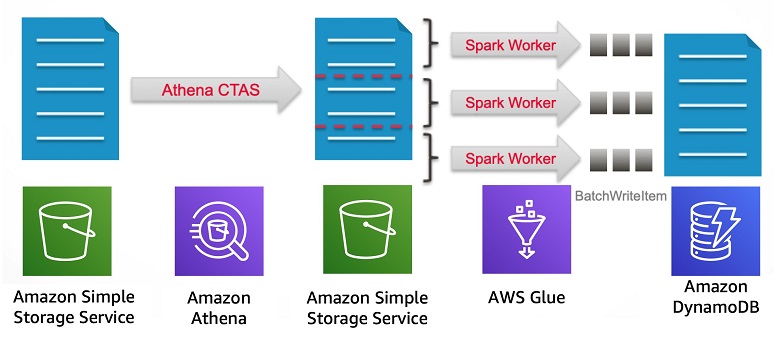AWS Database Blog
Category: Amazon Simple Storage Service (S3)
Building data lakes and implementing data retention policies with Amazon RDS snapshot export to Amazon S3
Amazon Relational Database Service (RDS) helps you easily create, operate, and scale a relational database in the cloud. In January 2020, AWS announced the ability to export snapshots from Amazon RDS for MySQL, Amazon RDS for PostgreSQL, Amazon RDS for MariaDB, Amazon Aurora PostgreSQL, and Amazon Aurora MySQL into Amazon S3 in Apache Parquet format. […]
How realtor.com maximized data upload from Amazon S3 into Amazon DynamoDB
This is a customer post by Arup Ray, VP Data Technology at realtor.com, and Daniel Whitehead, AWS Solutions Architect. Arup Ray would like to acknowledge Anil Pillai, Software Development Engineer at Amazon, for his pioneering contributions to this project during his former tenure at realtor.com as Senior Principal Data Engineer. realtor.com , operated by Move, Inc., […]
Integrating Amazon RDS for Oracle with Amazon S3 using S3_integration
Amazon RDS for Oracle gives you the full benefits of a managed service solution. You can use the lift-and-shift approach to migrate your legacy Oracle database to Amazon RDS for Oracle and, as a result, reduce the need to refactor and change existing application components. Data warehouse (DW) extraction is an integral part of most […]
Store SQL Server backups in Amazon S3 using AWS Storage Gateway
Customers like Alkami and Acadian Asset Management use AWS Storage Gateway to back up their Microsoft SQL Server databases directly to Amazon S3, reducing their on-premises storage footprint and leveraging S3 for durable, scalable, and cost-effective storage. Storage Gateway is a hybrid cloud storage service providing on-premises applications with access to virtually unlimited cloud storage. […]
Replicate data from Amazon Aurora to Amazon S3 with AWS Database Migration Service
In this blog post, I’ll cover how to use an AWS CloudFormation template to automate the configuration that allows you to replicate data between a relational database like Amazon Aurora to Amazon Simple Storage Service (Amazon S3). I’ll walk you through a sample CloudFormation template so that you can customize for your needs. The AWS […]
Client-Side Encryption and Decryption of Microsoft SQL Server Backups for Use with Amazon RDS
This blog post walks you through how to securely encrypt a Microsoft SQL Server backup file and restore the encrypted backup to an Amazon RDS for SQL Server instance. You perform this process using Amazon Simple Storage Service (Amazon S3) and AWS Key Management Service (AWS KMS). This post details the encryption and steps required […]
Migrate Delimited Files from Amazon S3 to an Amazon DynamoDB NoSQL Table Using AWS Database Migration Service and AWS CloudFormation
July 2023: This post was reviewed for accuracy. Recently, AWS Database Migration Services (AWS DMS) added support for using Amazon S3 as a source for your database migration. This new support means that you can now load data in comma-separated value (CSV) format from S3 into any supported target, whether or not the target has […]
Reading Amazon S3 Data from Oracle on Amazon EC2
When you’re working with AWS services, Amazon S3 is the first choice to store text data files. In the past, to access S3 data, first you’d download the files and then perform extract, transform, and load (ETL) to load the data into Oracle. This approach has two drawbacks. It takes time to download and perform […]
Use Amazon S3 to Store a Single Amazon Elasticsearch Service Index
September 8, 2021: Amazon Elasticsearch Service has been renamed to Amazon OpenSearch Service. See details. As detailed in our documentation, you can use the Elasticsearch API actions in Amazon Elasticsearch Service to take manual snapshots of your domain. You can easily back up your entire domain this way. However, did you know you can also […]








